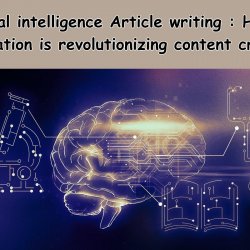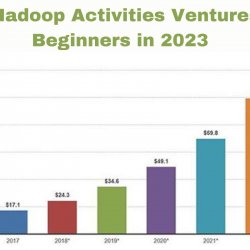Top Most Popular 15 Data Science Tools To Use in 2024

Data science has become an integral part of decision-making and innovation across industries, and the right set of tools can significantly impact the effectiveness and efficiency of data scientists and analysts. In 2024, several data science tools have risen to prominence, offering advanced features, scalability, and user-friendly interfaces. This comprehensive guide explores the top 15 most popular data science tools to use in 2024, providing insights into their key features, applications, and why they are favored by data professionals.
Python (Programming Language):
Overview: Python remains a cornerstone in the data science toolkit, known for its versatility, extensive libraries (such as NumPy, Pandas, and scikit-learn), and vibrant community support.
Applications: Widely used for data cleaning, analysis, machine learning, and the development of data science applications.
R (Programming Language):
Overview: R is a statistical programming language and environment, popular for its robust statistical packages and visualization capabilities.
Applications: Commonly used for statistical analysis, data visualization, and exploratory data analysis (EDA).
Jupyter Notebooks:
Overview: Jupyter Notebooks provide an interactive and web-based environment for creating and sharing documents that contain live code, equations, visualizations, and narrative text.
Applications: Ideal for data exploration, prototyping, and collaborative data analysis.
TensorFlow:
Overview: TensorFlow is an open-source machine learning library developed by Google, known for its flexibility and scalability.
Applications: Widely used for building and training deep learning models, including neural networks for image and speech recognition.
PyTorch:
Overview: PyTorch is an open-source deep learning library that has gained popularity for its dynamic computational graph and ease of use.
Applications: Commonly used for natural language processing (NLP), computer vision, and building neural networks.
Tableau:
Overview: Tableau is a powerful data visualization tool that allows users to create interactive and shareable dashboards.
Applications: Used for creating visually appealing and insightful data visualizations for better communication of findings.
SQL (Structured Query Language):
Overview: SQL is a standard programming language for managing and manipulating relational databases.
Applications: Essential for data extraction, transformation, and loading (ETL) processes, as well as querying and analyzing structured data.
Apache Spark:
Overview: Apache Spark is an open-source, distributed computing system that provides fast and general-purpose cluster computing.
Applications: Used for large-scale data processing, machine learning, and graph processing, offering speed and ease of use.
Scikit-Learn:
Overview: Scikit-Learn is a machine learning library for Python, providing simple and efficient tools for data analysis and modeling.
Applications: Widely used for classical machine learning algorithms, including classification, regression, clustering, and dimensionality reduction.
Power BI:
Overview: Power BI is a business analytics service by Microsoft that enables users to visualize and share insights across an organization.
Applications: Used for creating interactive reports, dashboards, and data visualizations for business intelligence purposes.
Apache Flink:
Overview: Apache Flink is an open-source stream processing framework for big data processing and analytics.
Applications: Ideal for real-time data processing, stream analytics, and event-driven applications.
Dask:
Overview: Dask is a parallel computing library that integrates with Python, providing dynamic task scheduling and parallel computing capabilities.
Applications: Used for parallelizing computations, handling larger-than-memory datasets, and scaling data analysis tasks.
KNIME:
Overview: KNIME is an open-source platform for data analytics, reporting, and integration that allows for visual programming and modular data workflows.
Applications: Popular for data preprocessing, exploration, and the creation of data science workflows without extensive coding.
H2O.ai:
Overview: H2O.ai offers open-source and commercial platforms for machine learning and artificial intelligence.
Applications: Used for building and deploying machine learning models, automating feature engineering, and model interpretability.
RapidMiner:
Overview: RapidMiner is an integrated data science platform that supports various data preparation, machine learning, and model deployment tasks.
Applications: Popular for end-to-end data science workflows, from data cleaning and preprocessing to model building and deployment.
Conclusion:
The landscape of data science tools is dynamic, and the choices made by data professionals can significantly impact the outcomes of their projects. In 2024, the tools mentioned in this comprehensive guide represent a diverse and powerful set of resources for data scientists and analysts. From programming languages and libraries to visualization platforms and machine learning frameworks, these tools play a crucial role in enabling effective data-driven decision-making across various industries. Staying informed about the evolving landscape of data science tools is essential for professionals seeking to harness the full potential of their data.
FAQs about Data Science Tools
What tool is used in data science?
- Python is a widely used tool in data science, along with libraries such as Pandas, NumPy, and scikit-learn.
Why are data science tools important?
- Data science tools are important because they enable efficient collection, analysis, and interpretation of data, facilitating informed decision-making, pattern discovery, and insights extraction in various fields and industries.
What are the three main functions of data science tools?
- Data Collection: Gather and acquire relevant data from various sources.
- Data Analysis: Process, clean, and analyze data to extract meaningful insights.
- Data Visualization: Present findings through graphical or visual representations for better understanding and communication.
Also Read
data analyst course in hyderabad
data science training in chennai






Ingen kommentarer endnu